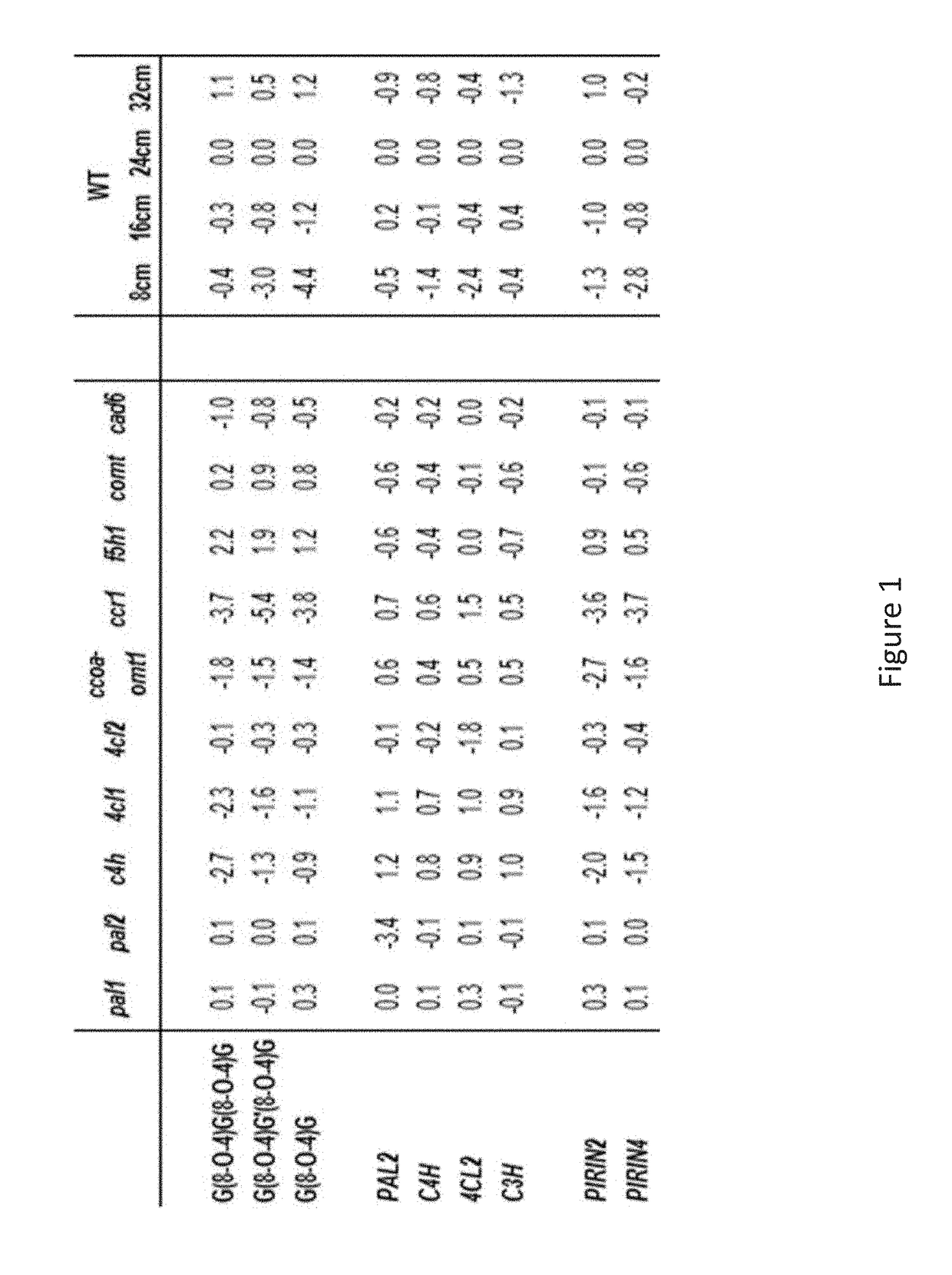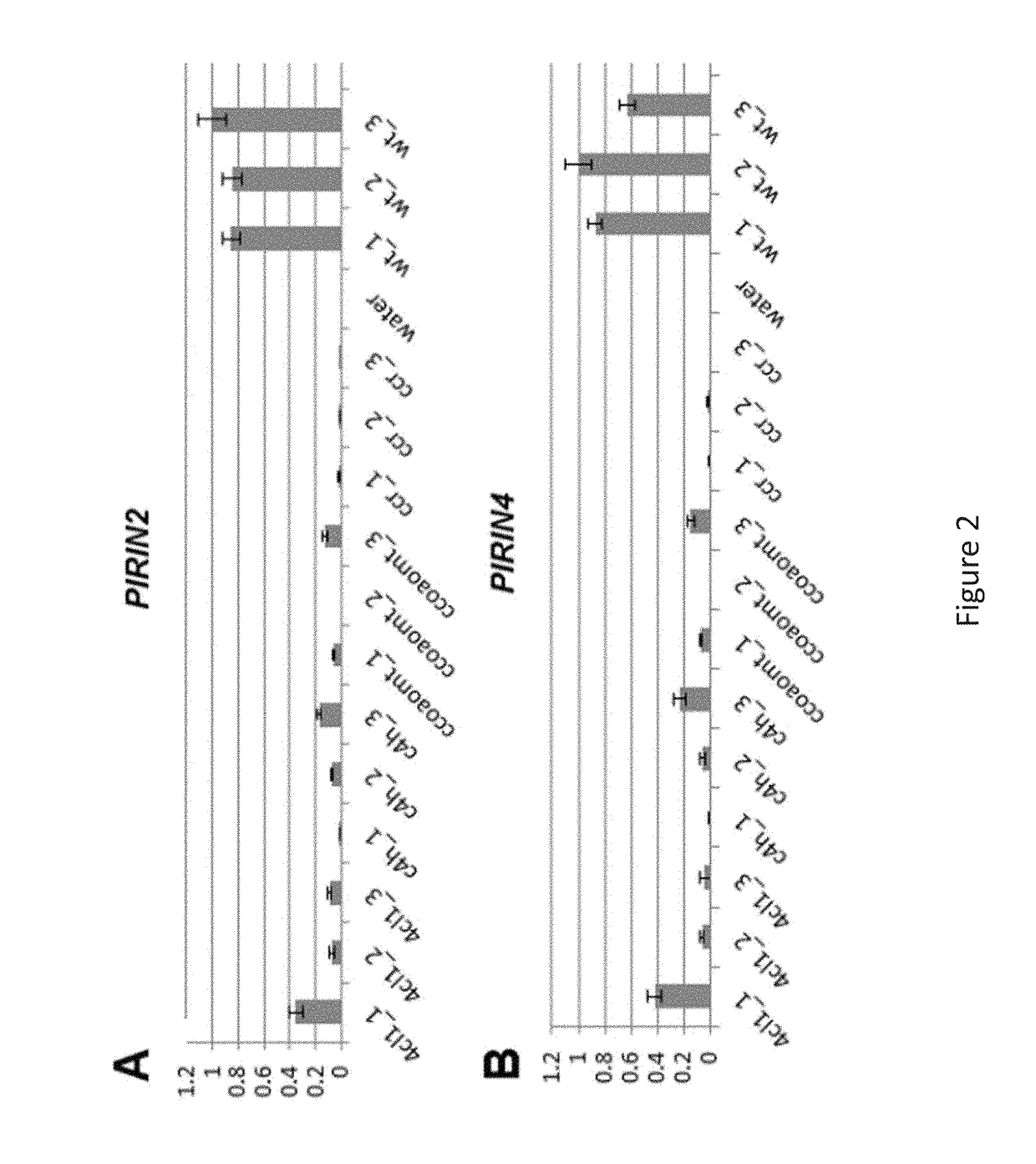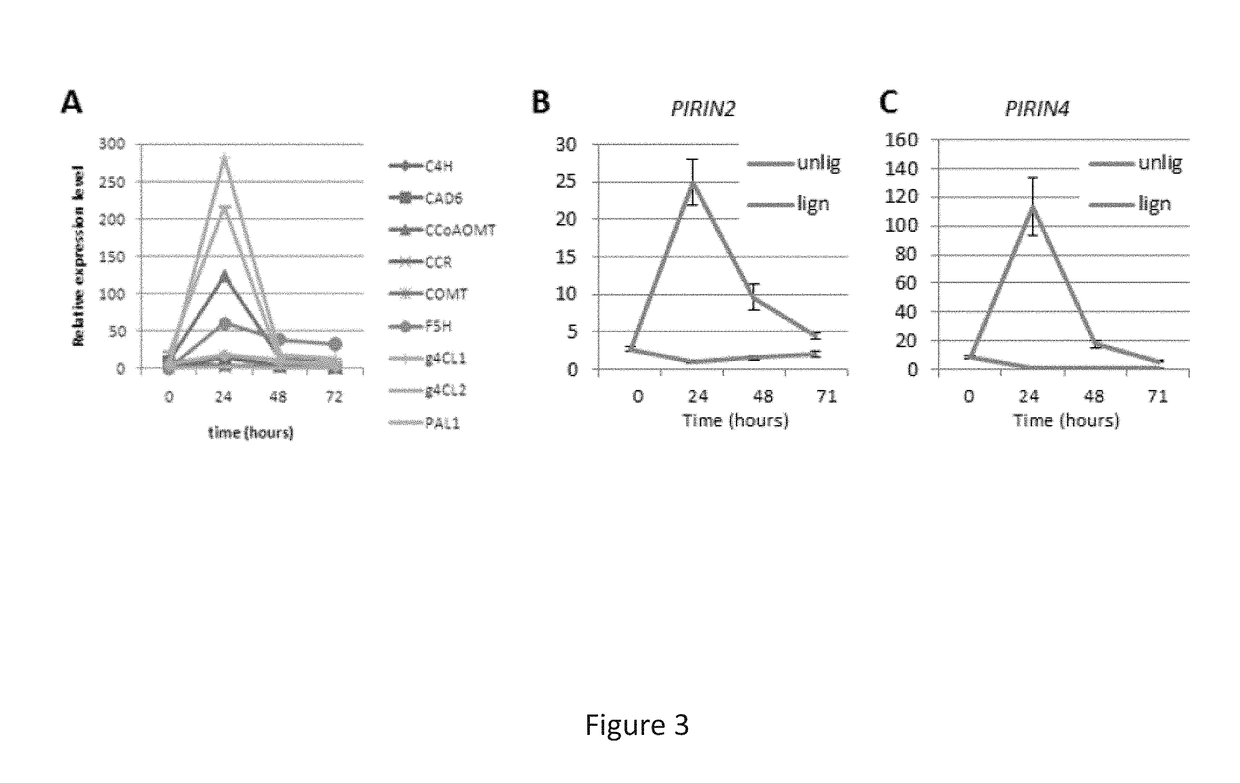Genetically modified plants having altered lignin content
a technology of lignin content and plant, which is applied in the direction of peptide sources, bio chemistry apparatus and processes, etc., can solve the problems of lignin having to be removed in expensive and environmentally risky processes, affecting quality, and affecting the quality of plants, so as to achieve enhanced properties and increase the s/g ratio
- Summary
- Abstract
- Description
- Claims
- Application Information
AI Technical Summary
Benefits of technology
Problems solved by technology
Method used
Image
Examples
example 1
The Expression of PIRIN2 and PIRIN4 Genes is Correlated with Genes Involved in Lignin Biosynthesis
[0129]Re-evaluation of the data in Vanholme et al. (2012b) showed that the expression levels of two PIRIN genes was negatively correlated with the expression levels of genes involved in lignin biosynthesis in various mutants, but positively correlated with the expression levels of those genes in wild-type plants (FIG. 1). Interestingly, the transcript abundance of both PIRIN2 and PIRIN4 appeared to be positively correlated with the amount of G-type oligolignols (FIG. 1).
[0130]RT-qPCR was performed to provide further evidence for a reduced expression of PIRIN2 and PIRIN4 in c4h, 4c11, ccoaomtl and ccrl mutants. Therefore, the expression of PIRIN2 and 4 was measured in three biological replicates (and three technical replicates for each biological) of each mutant line and WT (FIG. 2). This RT-qPCR result confirmed the expression results as obtained by microarrays.
[0131]Further, the expres...
example 2
Identification of AtPIRINs Knockout Mutants and Overexpressing Transgenic Plants
[0135]To investigate the function of the Arabidopsis PIRIN proteins, several T-DNA insertion lines were screened for each of the PIRIN genes from the NASC (Nottingham Arabidopsis Stock Centre) collection (http: / / Arabidopsis.info / ). One PIRIN1 homozygous knockout line (SALK_006939) was identified and named pirin1. Two PIRIN2 homozygous knockout lines, SM_3.15394 and SALK_079571 were identified and named pirin2-1 and pirin2-2, respectively. One PIRIN3 homozygous knockout line (SAIL_1243) was identified and named pirin3. Five PIRIN4 homozygous knockout lines were identified, including SALK_138671, SALK_125909, SALK_100855, GT19099 and GT25586, and named pirin4-1, pirin4-2, pirin4-3, pirin4-4 and pirin4-5, respectively. No full length according transcripts could be amplified by RT-PCR from each of the lines, pirin1, pirin2-1, pirin2-2, pirin3, and pirin4-4.
[0136]Further, two PIRIN2 overexpressing transgenic ...
example 3
Phenotype of Pirin2 Mutants and PIRIN2 Overexpression (PIRIN2 OE) Line
[0137]For phenotypic characterization, mutant and overexpression lines were grown alongside WT. After eight weeks of short day conditions that allowed development of a rosette but suppresses inflorescence stem development, plants were moved to long day conditions. No obvious effect could be observed on the development of the inflorescence of the pirin2 mutants and the PIRIN2 OE6 line. In addition, the final stem height was measured and no statistical differences were measured.
PUM
| Property | Measurement | Unit |
|---|---|---|
| height | aaaaa | aaaaa |
| height | aaaaa | aaaaa |
| temperature | aaaaa | aaaaa |
Abstract
Description
Claims
Application Information
 Login to View More
Login to View More - R&D
- Intellectual Property
- Life Sciences
- Materials
- Tech Scout
- Unparalleled Data Quality
- Higher Quality Content
- 60% Fewer Hallucinations
Browse by: Latest US Patents, China's latest patents, Technical Efficacy Thesaurus, Application Domain, Technology Topic, Popular Technical Reports.
© 2025 PatSnap. All rights reserved.Legal|Privacy policy|Modern Slavery Act Transparency Statement|Sitemap|About US| Contact US: help@patsnap.com



